University Marks

The Johns Hopkins University brand includes various supporting marks, each with its own use cases and guidance. These marks uniquely articulate our brand and are limited in circulation to preserve their intended purpose.
Academic Seal
Adopted by the board of trustees on December 7, 1885, the academic seal represents the university’s dedication to the advancement of knowledge in service to the community and the world. The design originates from the collaborative work of Baltimore historian Clayton C. Hall, Esq. and Stephen Tucker, Esq., the Somerset Herald at the College of Arms in London.
The seal may only be used with permission from University Communications. It can never be altered or varied. Contact [email protected] for permission and files.
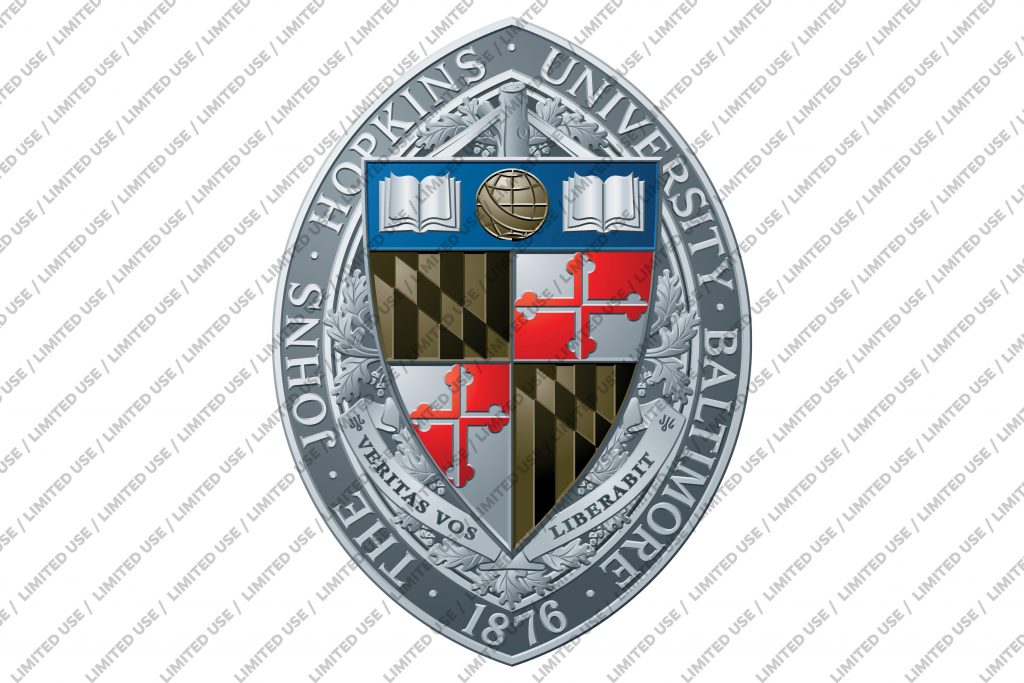
Full-Color Seal
The full-color seal of Johns Hopkins University is reserved for official documents—including diplomas, presidential and trustee minutes, and other legal, academic, or official university documentation—or the highest awards and certificates.
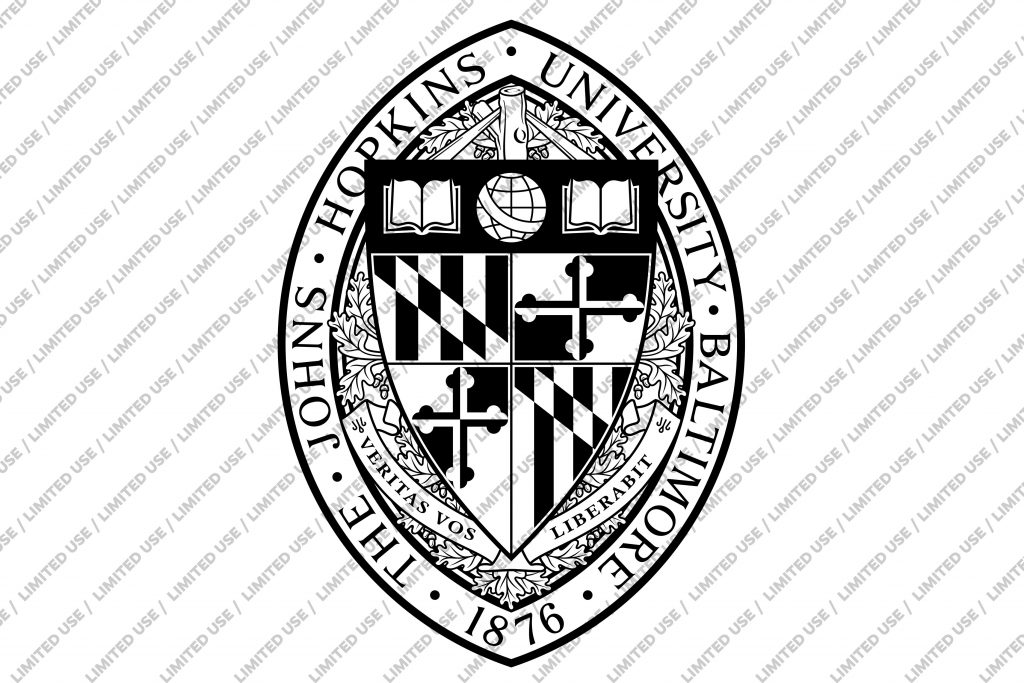
Single-Color Seal
The single-color seal may be used for formal occasions and products, including items for Commencement; specific gift items in brass, silver, or pewter; appropriate clothing (blazers, not t-shirts); and university chairs.
The truth will set you free
The University Archives preserves the original handwritten minutes of the board of trustees going back to 1870. The minutes for December 7, 1885, include a description of the various elements of the seal, reading in part: “The escutcheon shall be represented as suspended from an oak branch; below shall be the motto, Veritas vos Liberabit.”
—James Stimpert, Senior Reference Archivist, Sheridan Libraries in a Letter to the Editor in Johns Hopkins Magazine, Summer 2018
Stand-Alone Wordmark
The Johns Hopkins stand-alone wordmark replaces the legacy joint University & Medicine wordmark. For unique use cases, like our sesquicentennial, where the entire Johns Hopkins ecosystem needs to be represented, the stand-alone wordmark can be leveraged. Use is currently limited to marketing and communications on behalf of the entire Johns Hopkins ecosystem. Individual use cases must be approved by University Communications. As such, this mark is not available for download, but may be requested via an email to [email protected].

Spirit Marks
Our spirit marks were created to evoke a sense of energy and Blue Jay pride. They’re ideally suited to represent Hopkins Athletics but are available for use across the enterprise to support brand affinity. Spirit marks may not replace the primary logo on any communication, and they may not be altered.
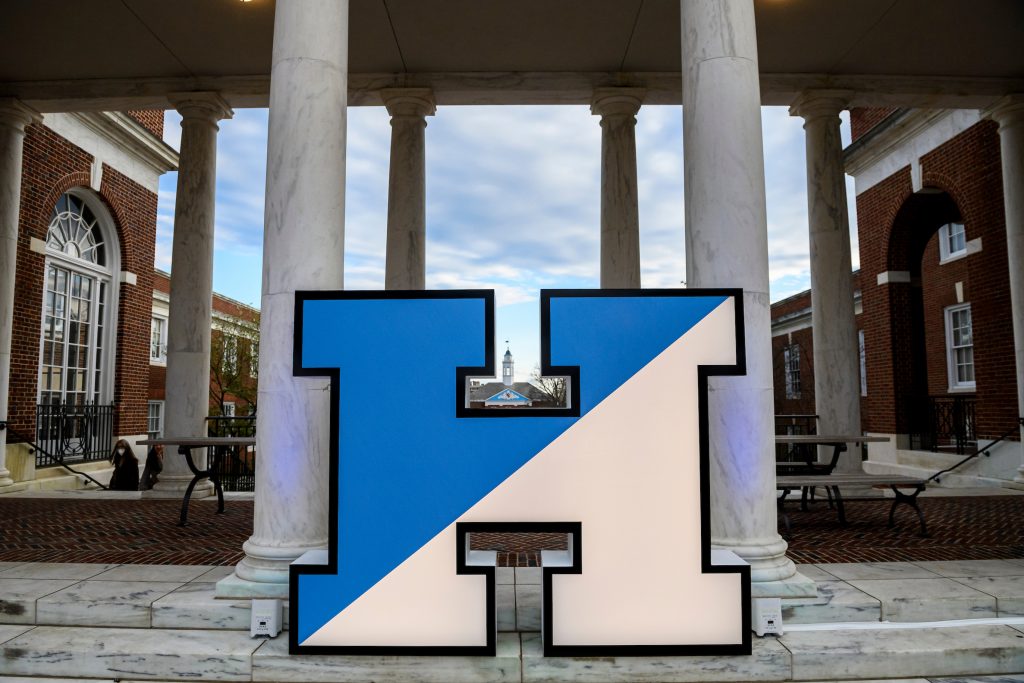
Split Block H
The Split Block H can be considered for use as a spirit mark to represent affinity among our alumni and current student audiences. It may not be altered or locked with any logos or text. The color division of the H should never change direction, nor should the proportion or the font change.
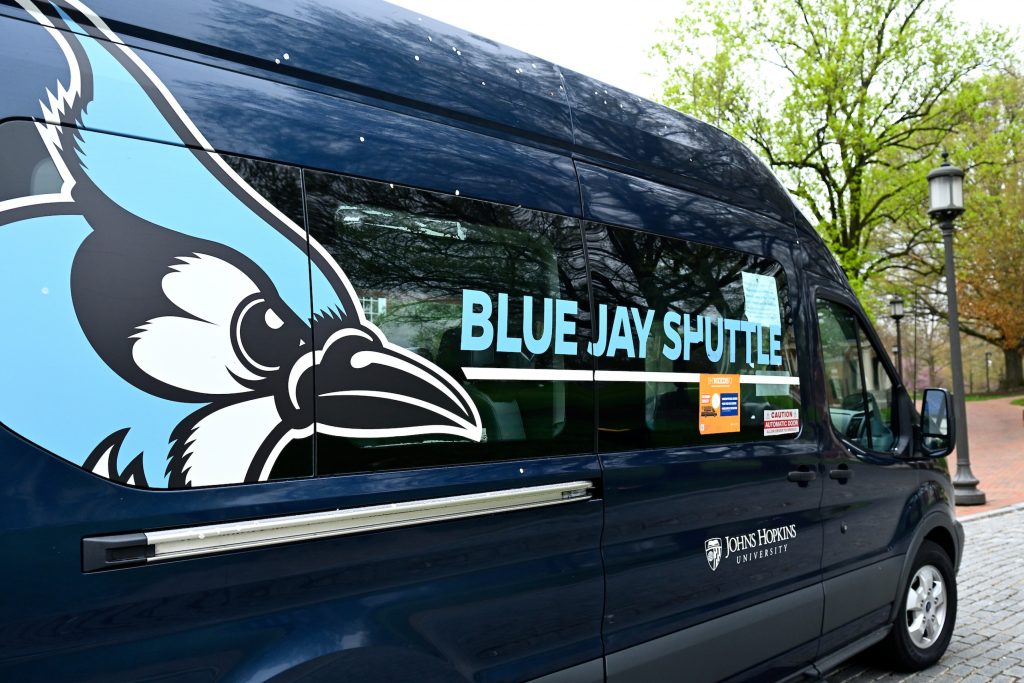
Blue Jay
The official blue jay graphic can be used as a spirit mark provided it is not the shielded blue jay, which is reserved for Athletics. Cropping this mark is encouraged.
Note: Custom blue jay illustrations and iconography are not allowed without permission from University Communications.
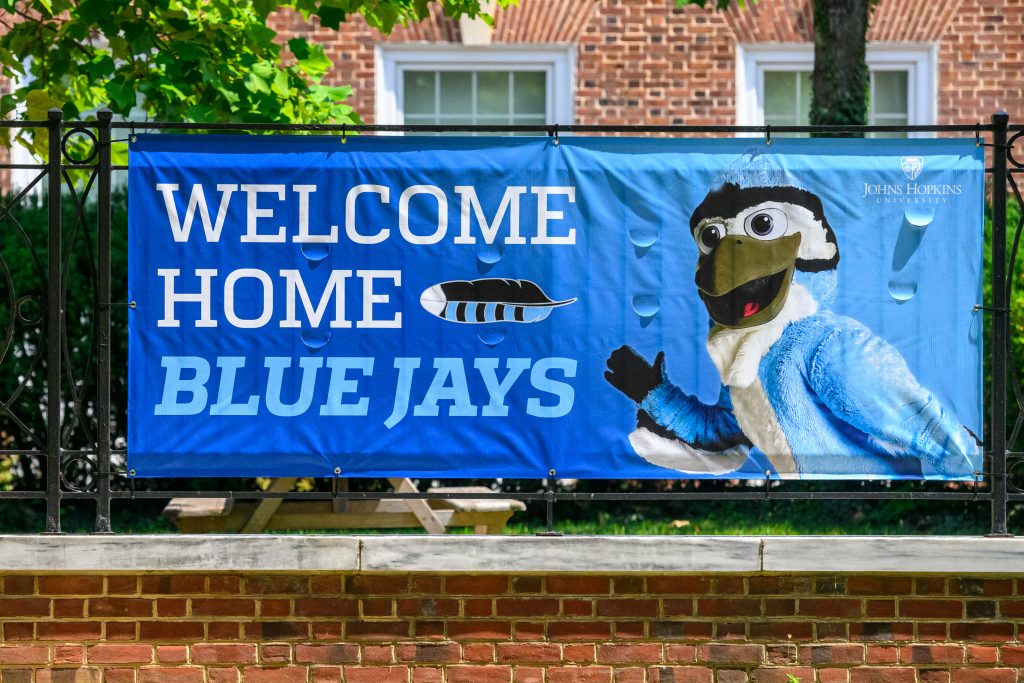
Mascot
Johns Hopkins’ mascot, Jay (they/them), is a great characterization of Blue Jay pride. Photos and videos of Jay can be used on promotional materials, particularly those pertaining to undergraduate students. Jay imagery is not suitable for use on apparel.
Note: The mascot costume was updated in 2019. Images of the old mascot should be avoided.
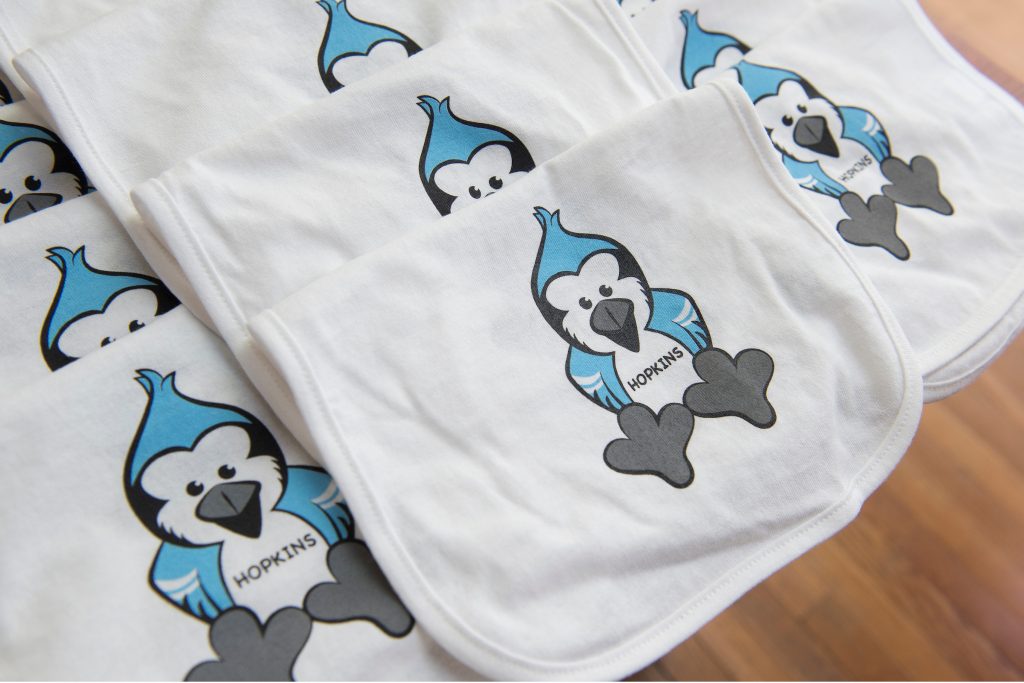
Baby Jay
The Baby Jay graphic was created specifically for use on youth merchandise and collateral specific to youth and family programming. Alternative uses must be approved by University Communications.